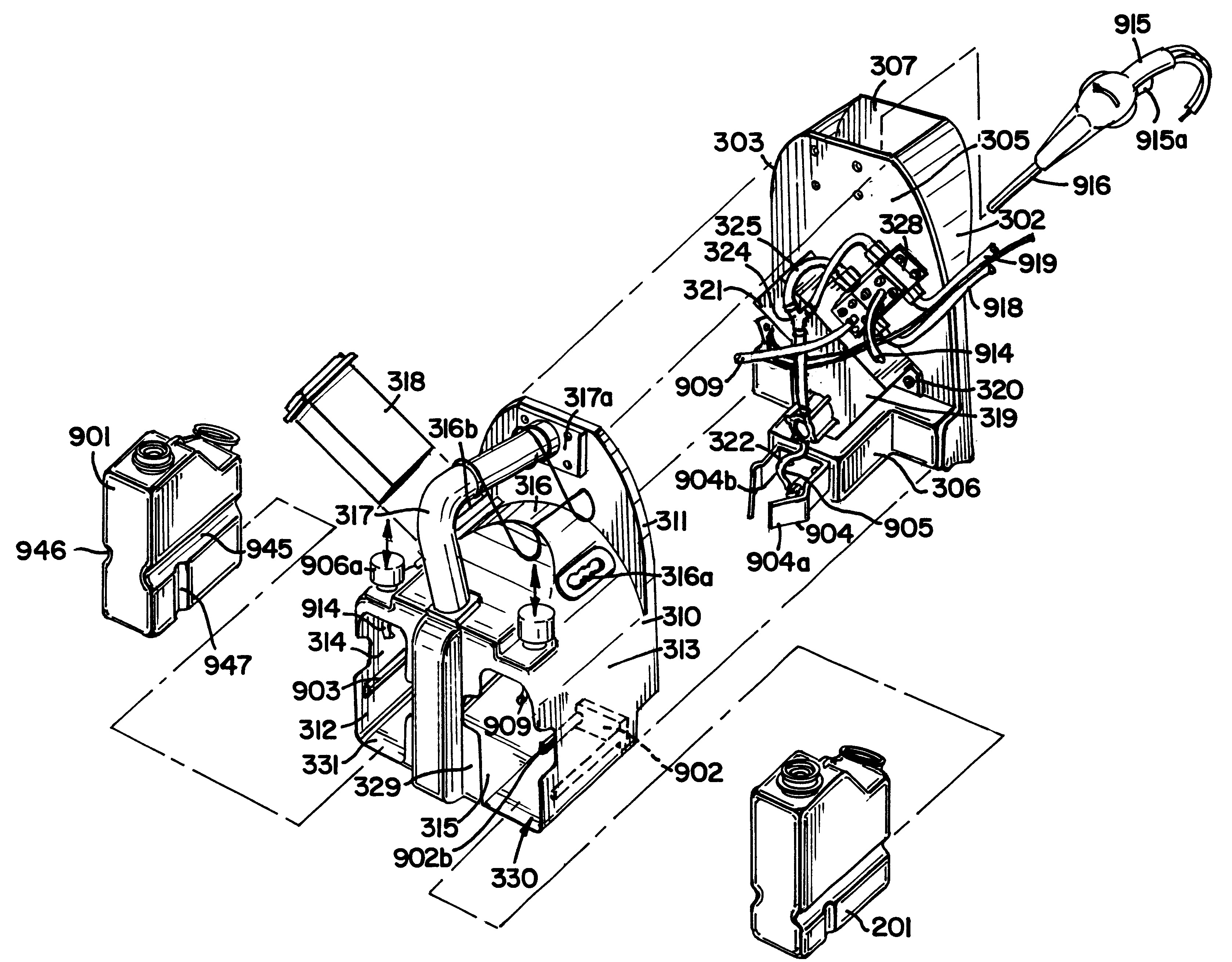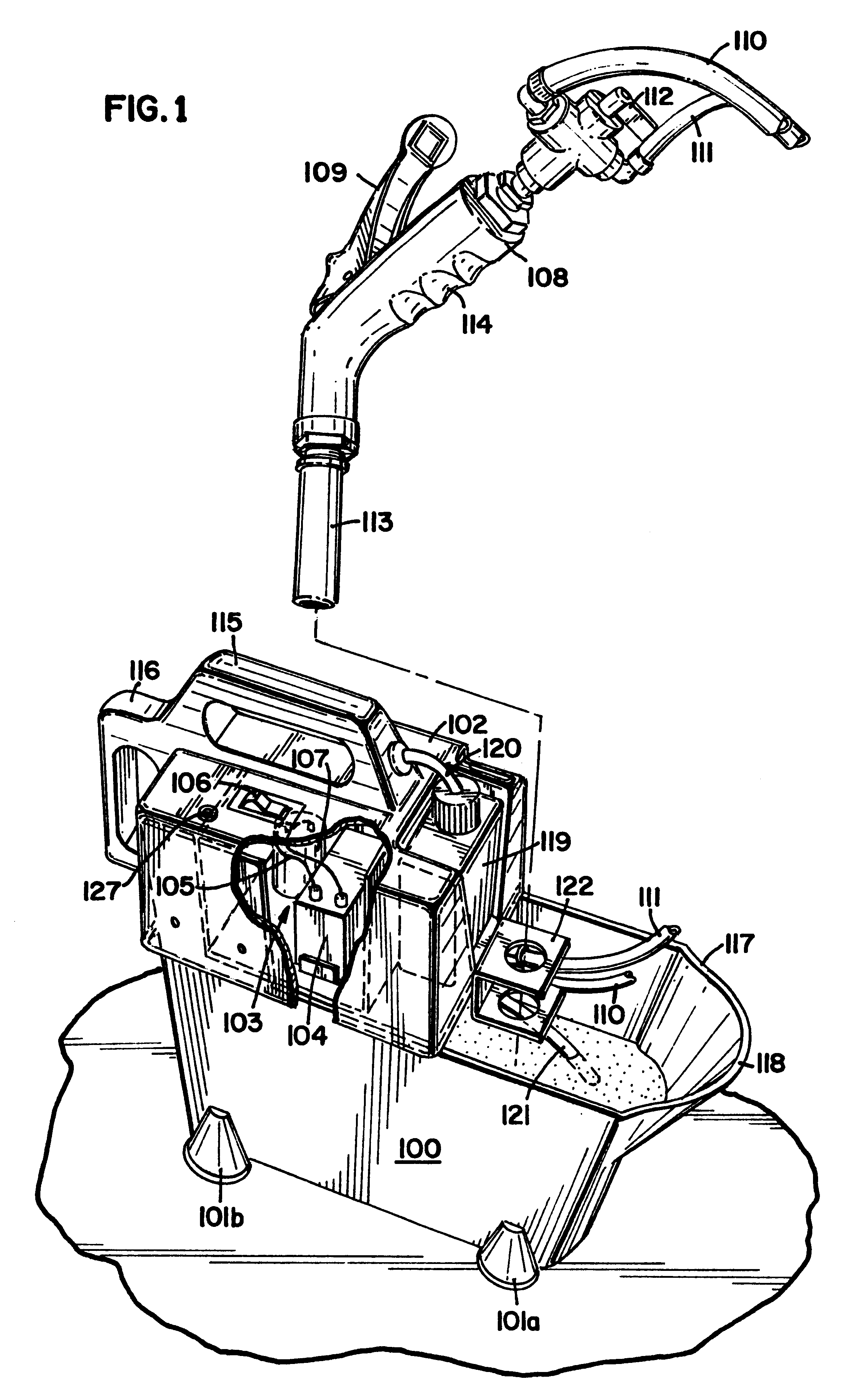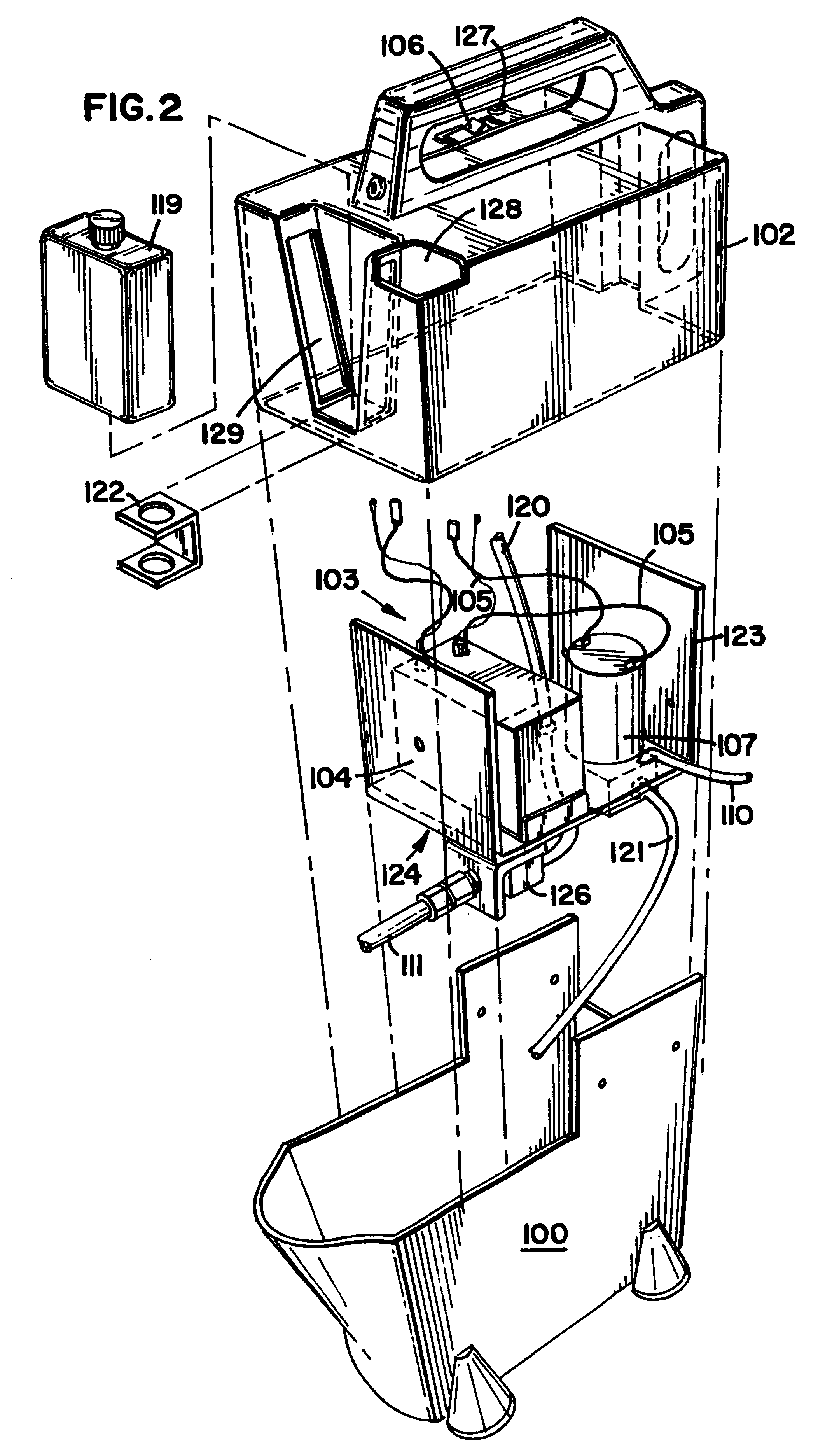Portable unit and wall unit dispensers and method of dispensing with timer
a dispenser and portable technology, applied in the direction of liquid transfer devices, cleaning using liquids, applications, etc., can solve the problems of high labor intensity of personnel, time-consuming procedures, and inability to change the method of cleaning solution, so as to achieve the effect of being easily modifiabl
- Summary
- Abstract
- Description
- Claims
- Application Information
AI Technical Summary
Benefits of technology
Problems solved by technology
Method used
Image
Examples
Embodiment Construction
FIG. 1 shows a spray head 113 connected to the pump output of the dilution section. Two sources 110 and 111 are shown for the diluted concentrate and the rinse. The spray is energized by compressing handle 109 which permits either rinse or diluted concentrate to exit the spray head in a spray pattern. The rinse or the diluted concentrate is selected using valve 112. The spray head is typically constructed from conventional metallic and thermoplastic materials. The spray head can be adapted for one, two or more diluted concentrate streams and a rinse stream. The selection of the rinse or diluted concentrate stream can be made at valve 112 in the spray head or in the dilution section 102 by selecting the appropriate concentrate and venturi. The dilution system of the invention includes a container 100 for an aqueous diluent such as service water. The container is typically a molded unit made from a thermoplastic material. Such a unit can be injection molded, vacuum molded or shaped us...
PUM
| Property | Measurement | Unit |
|---|---|---|
| volume | aaaaa | aaaaa |
| volume | aaaaa | aaaaa |
| volume | aaaaa | aaaaa |
Abstract
Description
Claims
Application Information
 Login to View More
Login to View More - R&D
- Intellectual Property
- Life Sciences
- Materials
- Tech Scout
- Unparalleled Data Quality
- Higher Quality Content
- 60% Fewer Hallucinations
Browse by: Latest US Patents, China's latest patents, Technical Efficacy Thesaurus, Application Domain, Technology Topic, Popular Technical Reports.
© 2025 PatSnap. All rights reserved.Legal|Privacy policy|Modern Slavery Act Transparency Statement|Sitemap|About US| Contact US: help@patsnap.com



